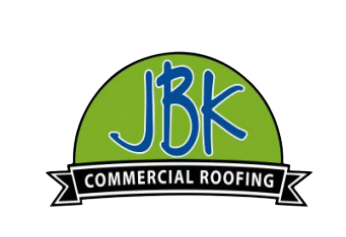What is EPDM Roofing?
There are many choices for your commercial roof. Different methods of sealing and protecting your roof will offer different advantages and disadvantages. The key is to decide beforehand exactly what you need from your roof so you can make an informed decision between your available options.
We recently discussed the advantages of using the Duro-Last roofing system for your low-sloped or flat commercial roof. Today, we’ll look at EPDM roofing to discover exactly what it means, how it benefits you, and why you should consider it as an option for sealing and protecting your commercial roof.
JBK Roofing offers many different options including Duro-Last and thermoset single ply roofing systems for your commercial roof. Visit us today to learn more.
What is EPDM?
EPDM stands for ethylene propylene diene terpolymer and is a type of synthetic rubber. Ethylene and propylene are the two main ingredients in the synthetic rubber, which are both derived from oil and natural gas. In roofing system applications, it is mostly produced in the color black and occasionally white. It can be procured in a variety of widths and thicknesses.
This material has become known for its flexibility and is used for a number of different applications. It can be used for items as varied as weather stripping, tubing, electrical hoses, belts, and more.
Today, however, we’re concerned with EPDM’s uses for commercial roofing. It is a particularly well-adept material for the purposes of roofing. The elastomeric material is specifically manufactured to withstand high levels of ozone. It is as flexible as it is adaptable in instances of either high or low temperatures. It’s resilience in exposure to both extremes of temperature make it a great option for commercial roofing materials. This is why it is widely used for buildings with a low-sloped roof.
Thermoset Single Ply Roofing
EPDM roofing is an example of thermoset single ply roofing. This is a very popular style of roofing that makes use of chemically cross-linked or vulcanized principal polymers. Adhesives are generally used to join materials once they have been vulcanized, or “cured.”
EPDM is one of the most popular methods of thermoset single ply roofing, along with:
- Neoprene (CR)
- Polyisobutylene (PIB)
- Epichlorohydrin (ECH)
- Chlorosulfonated polyethylene (CSPE)
Single ply roofing has taken the place of tar paper as the material-of-choice for commercial roofs. Although these older materials were quite popular, the last few decades have seen a major switch to single ply roofs because of their inherent strength, durability, and flexibility.
Advantages of EPDM Roofing
This switch to roofing systems like EPDM is because of the many advantages it offers over traditionally used materials. The elements included in the composition of the compound combined with the methods of application create a system that offers numerous advantages to those that choose to use it for their commercial roof.
Durability is one of the main advantages of using EPDM roofing material. This affords the material many capabilities at the same time as it allows for reliable use for extremely long periods—sometimes up to 30 years or more with a comprehensive preventative maintenance plan.
The long-lasting materials are also great for withstanding the harsh elements that a commercial roof can face. Every roof, by nature, has to withstand long hours of direct sunlight. This can degrade materials over time and lead to an increased tendency to crack, splinter, and leak. These leaks can have drastic effects on the building below. EPDM roofing materials can be made in both black and white. Of course the white membrane will better withstand this barrage of sunlight, but even help the building lower the energy costs.
EPDM roofing materials are highly desirable because of their ability to repel moisture as well as their relatively low cost of installation. And should something happen to the roof or if you find yourself in need of making a change, these materials are easily repaired and modified.
Installation
The flexibility inherent to EPDM roofing materials means there are a few different ways it can be installed.
Ballasted
This process has many benefits including a great ability to protect it from the elements. Insulation is first laid along the top of the roof which is then covered with an EPDM membrane. The membrane is fastened along edges and curves, but gravity is the main method of securing it. Ballast (smooth rock) is then spread over the top of the membrane to hold it in place.
Fully Adhered
This is great for low-sloped roofs. Insulation is first secured to the roof deck. The EPDM membrane is then attached to the top of this insulation, often with a bonding adhesive. This method offers increased puncture resistance and durability.
Mechanical
Fastening plates or strips are used to secure the membrane to the insulation and roof deck below. The plates/strips are patched over by adhering EPDM material over the fastening plates/strips. This method accommodates roofs with a slightly steeper slope.
VISIT JBK ROOFING FOR YOUR THERMOSET SINGLE PLY ROOFING SYSTEM
The experts at JBK Roofing have been helping Kentucky and Tennessee business owners protect their commercial roofs since 1998.
